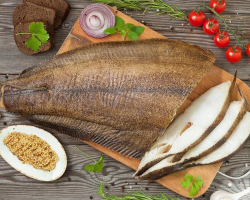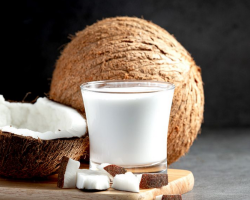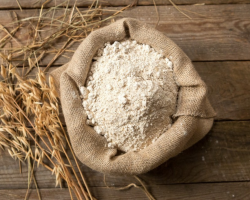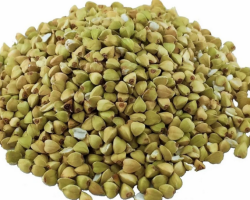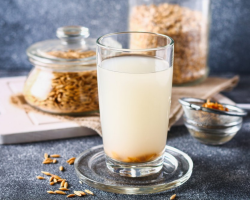The article will tell you how useful semolina is and what exactly it can be harmful.
Content
- Sanny porridge - semolina: benefits and harm to the body and health, vitamins
- When, at what age can you start feeding the child with semolina?
- Is it possible to give a three -month, 6 -month -old child, a child to give semolina for up to a year?
- Video: "On the dangers and benefits of semolina for children"
Sanny porridge - semolina: benefits and harm to the body and health, vitamins
Sanny porridge is familiar literally every person since childhood. It was an unchanged dish for infants, children in the garden and school, it was prescribed for those who should adhere to special dietary nutrition for diseases such as gastritis and ulcer. It was also believed that this cereal has a number of advantages compared to other porridge. Manka was respected for great nutritional properties and the ability to quickly restore strength.
Until now, semolina is an integral diet of older people and children of any age. Of course, in modern kitchen, semolina is quite rare and is present only in those families who have a child. Nevertheless, this product is very useful and has a number of nutrients that a person needs. They cook porridge, milk, soups, make casserole, add to lazy dumplings and cheesecakes to be more elastic and satisfying.
Interesting: semolina is made of wheat, but its main difference from wheat porridge is not small grinding, but the fact that it is close to the composition of the wheat flour of the highest grade.
Manufacturing composition:
- Fat unsaturated acids
- Fat
- Beki
- Carbohydrates
- Starch
- Gluten
- Sajarids
- Cellulose
- Chlorine
- Ash
- Alimentary fiber
- Vitamin B1
- Vitamin B2
- Vitamin B6
- Vitamin B9
- Vitamin RR
- Vitamin E
- Sulfur
- Magnesium
- Zinc
- Calcium
- Iron
- Sodium
Important: all trace elements that are in a semolina are absorbed quickly and easily. It is due to this that the body is rapidly saturated, the return of vitality, and providing the necessary energy charge. But, it is worth noting that if you compare semolina with other cereals, then there are fewer vitamins in it than in buckwheat or rice, for example.

Useful properties of semolina:
- Rapid production of energy by the body
- The stock of important trace elements helps to function kidneys and heart.
- There is a lot of calcium in decoy, and this strengthens bone tissue
- Zinc in the composition of manking strengthens immunity
- A rich supply of dietary fibers helps to establish the work of the heart.
- Since there is vitamin E in manking, we can safely say that the semolina provides not only a healing, but also an anti -aging property.
- Cereal helps to "work" the brain and nervous system
- Vitamin supply of decoy "kills" cholesterol in the blood
- The main feature of decoy is to create a feeling of satiety for a long time.
Important: you should know that decoy is a high -calorie product and therefore it should be combined in preparation with low -fat products: milk, water, fruits.
Than decoy health:
- There is a fiber in a decoy, but it is not much in the croup and therefore it does not irritate the intestinal mucosa. This is very useful for those people who experience diseases of the gastrointestinal tract or recently underwent surgery on internal organs.
- The peculiarity of manking is that it is able to digest literally in the entire intestines (even in the lower section), this favorably affects the withdrawal of mucus and salts, fats from the body. This has a cleansing property on the intestines.
- A rich supply of antioxidants favorably affects the functioning of the nervous system and therefore there is a grip with a crop in the presence of central nervous system disorders, as well as with nervous breakdowns.
- There is not much protein in semolina and therefore it is useful to eat cereals to those who have renal failure.
It is useful to eat semolina regularly to those people who often face excessive physical exertion. It is especially useful to eat for breakfast, so you can stock up on a supply of calories that can be spent throughout the day. There is also a semolina in the morning also necessary for those who have colitis, gastritis or enteritis.
Saturation with a mankid in the morning will allow you to avoid strong attacks of hunger throughout the day. This is very useful for people who follow the figure. If you consider calories, then you should cook semolina on water, not milk and not add butter (you can do with any vegetable). Most doctors invariably consider semolina - the most useful food for children.
It is important to consider the nuances in which semolina can harm the body:
- There is such a substance as in semolina fitin -it can block the absorption of calcium by the body, and this, in turn, can lead to diseases of the heart, poor blood coagulation, and seizures.
- Manna porridge contains a lot gluten -strong allergen, which causes violations and problems in the digestive tract.
- Excessive and frequent, constant use of semolina in large quantities disrupts the absorption of iron in the body.
- Sunneck is quite high -calorie and therefore it can not be eaten often for those who consider calories and tries to lose weight.
It is interesting to know that during pregnancy, semolina is more preferable food than buckwheat or rice (it saturates and does not cause problems with the intestines). This property will help to safely survive toxicosis (especially if you add greens and dried fruits to the porridge). Sanny porridge on the water is the best nutrition for people suffering from pancreatitis (assimilation of food will be soft).
The benefits of the gastrointestinal tract:
- Envelops the stomach
- Cleanses the intestines of toxins and slags
- Establishing digestion
- Accelerates the healing of microtrauma in the stomach
- Prevention of erosion and stomach ulcers
Important: not for all diseases, semolina is healthy food. For example, those who suffer from diabetes mellitus do not have a semolina, since it has a high gi and the ability to increase glucose levels.
Why is semolina considered "harmful" food:
- The high content of gluten, which leads to the thinning of the intestine, violation of its work, alergies and disorders.
- Calcium unhappy can lead to rickets
- Frequent use of semolina can lead to obesity
How to cook and eat yourself:
- Cook in milk or water. For children, you can add butter and sugar so that the porridge is tastier.
- There is a semolina immediately after cooking. The longer the semolina "costs", the less nutrients remain in it.
- You should not eat semolina every day, it is best to cook it 2 or 3 times a week or less often.

When, at what age can you start feeding the child with semolina?
It seems to have always fed semolina porridge. Even grandmothers fed today's generation with a spoon “For mom and dad” and today modern mothers are trying to introduce semolina to their little children into the diet. It turns out semolina from ordinary wheat, which is very finely grinded. It is this property that helps mank well to absorb.
A rich supply of carbohydrates for a long time saturates the child’s body with energy, and a number of nutrient trace elements have a positive effect on the work of all systems. On the other hand, semolina has a number of disadvantages, like baby food:
- The nutritional value is less than other cereals
- There are fewer vitamins and minerals in decoration than in other cereals
- Manking has gluten-an allergen substance and a substance that “inhibiting” normal metabolism and the digestive process.
- Sunkal cannot be included too often in the diet of children so that they do not "earn" obesity.
Each parent, based on the state of health of his baby and his features, independently decides on when to put semolina into the diet and whether it is necessary to do this. If the baby’s body reacts normally to cereals, some mothers begin to feed the children with a mankua for six months. The reason for this is the lack of breast milk and the desire to add to feed the baby. To do this, they boil “liquid” semolina and feed children from the bottle.

Is it possible to give a three -month, 6 -month -old child, a child to give semolina for up to a year?
However, doctors do not recommend introducing semolina into the diet earlier than 1 year. The frequency of taking semolina in a child should not exceed at this age 1-2 times in 1-2 weeks. Such a frequency will not bring any harm to the body. If you want to introduce semolina from the age of 6-7 months, you should know that until this moment you will already need to start complementary foods from other (more "sparing") cereals like buckwheat or rice.
Introduce semolina into the child’s diet correctly:
- Make feeding decoration, starting with 1 tbsp.
- Cook the porridge for the first feeding liquid and preferably on the water.
- Gradually increase the number of porridge
If you have a choice, then do not introduce semolina into the child’s diet earlier than 6 months, trying to feed him for six months only with milk mixtures or breast milk. After the performance of 6 months, start the first complementary foods of some vegetables and cereal flour (buckwheat, oatmeal, rice) and only then, when you see the normal reaction of the baby, try the semolina.


